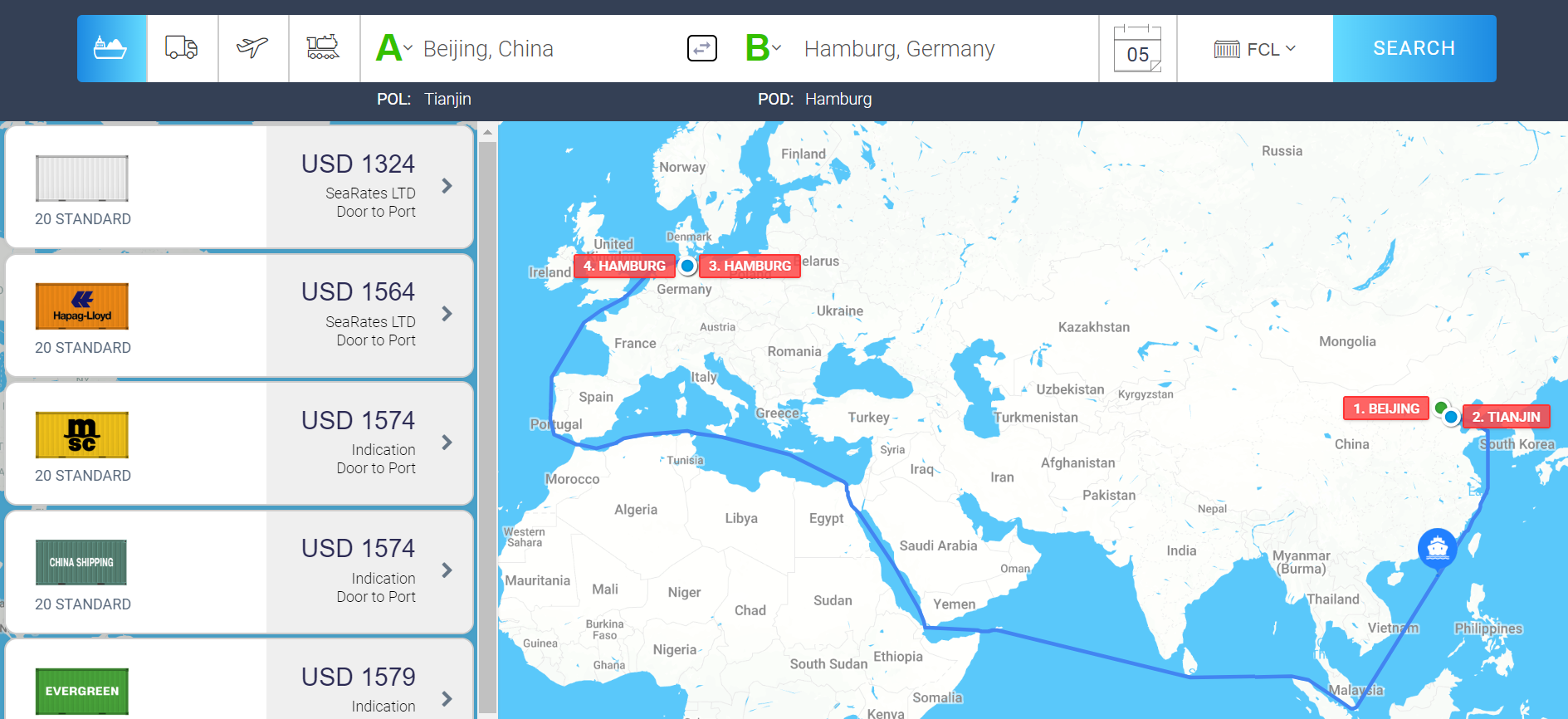In this article, we will look at some of the design elements and functionality of the Logistics Explorer platform, which we are often asked about. All these features were first seen in January 2017 and were due to the experience, feedback and wishes of users and customers.
To get more information about the platform operation, we recommend that you visit the appropriate section of our Help Center for Shippers, or if you represent a transport company and want to understand the management of rates, commissions and interaction with partners - the Help Center for Carriers.
At the same time, the software is constantly updated, and it is always better to learn about it from the first mouth. Write to our managers at sales@searates.com!
The ability to see who added a rate
This option is possible for companies that use the platform on their website. If you received a booking in the direction that your partner serves, then you can see who exactly added this rate by simply clicking on the link in the email you received to the mail, and then going to the specific cost component, as shown below. This is made for the convenience of fast transportation arrangement, when you, for example, do not have time for detailed market research, and you can simply take advantage of the support of an agent from another country, earning additional profits on this.
As part of the strategy of the digital agent network, this information is not available to unregistered users or just shippers who are looking for shipping costs. Only official partners can see it under their account.
Optimizing the freight search Port-To-Port
When entering port cities in the process of finding the cost of freight, the system will not include local costs, because most likely the respondent is only looking for sea freight. Our statistical studies showed that of the 400,000 users looking for the cost of transportation between the port cities, 94% mean exactly the freight without local charges. In the case the system includes loading and unloading operations or other mandatory port charges, and as a consequence gives a higher price - the user does not want to understand what is included and proceed to the second step. Thus, problems were solved by automatic identification.
Nevertheless, if the shipper still needs certain local services, he/she can easily turn them on by ticking the necessary components.
Calculation of the railway tariff with the proposal of alternative options
Shippers, who regularly send goods by rail, are well aware of the problem of the availability of rolling stock. For example, if you constantly transport furniture in railway containers, and on a certain date your forwarder informs you that there are no inventory of railway platforms - this necessarily leads to a disruption in the delivery, and may even lead to the termination of the contract with the buyer. To avoid such troubles - it would be possible to use cars or even gondola cars as an alternative, but it also requires processing a large amount of information and is not available to everyone.
Another thing - if you see all the options clearly on each specific date, and immediately draw conclusions on the price. In this case, the risks of unforeseen circumstances with the equipment are reduced to a minimum. Now this is not the future.
Breakdown of local port costs
In ports around the world, there is a completely different practice of charging the costs of infrastructure and other components. No one else, like a local freight forwarder, will know better what is the exact cost of cargo handling at the port - and they are the ones who are adding these tariffs to the platform. Thus, the shipper is at any time available to see a detailed list of all the costs that he/she will encounter during the delivery process. This format of working with BIG Data allows today to achieve transparency in logistics and to give the client to feel confident and protected from hidden payments.
Direction reversal button
Recently, the trend is becoming more and more popular when the shippier acts simultaneously as an exporter and importer for various deliveries of goods. There are more and more companies-traders and brokers who do not have cargo in ownership, just resell it from one country to another, and often even not being located in any of these countries. In particular, freight forwarders book on some directions for their customers on a round trip, for example, by sending a cargo from the Baltic to China, and then finding another cargo in the opposite direction (say, which forwarder will send by the shipping line needed for him), thereby closing the cycle and cutting costs, and thus increasing their profits.
To make this process even simpler, we added a button that allows you to mirror the delivery route and quickly recalculate the cost in the opposite direction.
Platform design options on different sites
We took several past designs to show how the Logistics Explorer and the search filter can look on any site of the transport company and not only, no matter whether the site is created by us on a turn-key basis, or it is a ready site with its own admin- panel.
As you can see, there is almost no limits to how the filter can look. In addition, any client is intuitively clear from the first seconds on your site, what is happening here and what is the use of it - ability to make a real calculation of tariffs for transportation and place online booking. And all this happens under your logo.
Subscribe to our Telegram-channel and keep abreast of fresh updates and ideas. And if you are constantly bloom with ideas - share them with the community in our chat room, and let the ideas go! After all, the sphere of logistics is so much in need of change.

